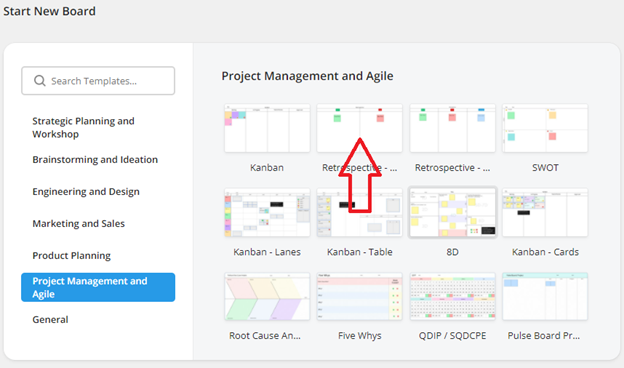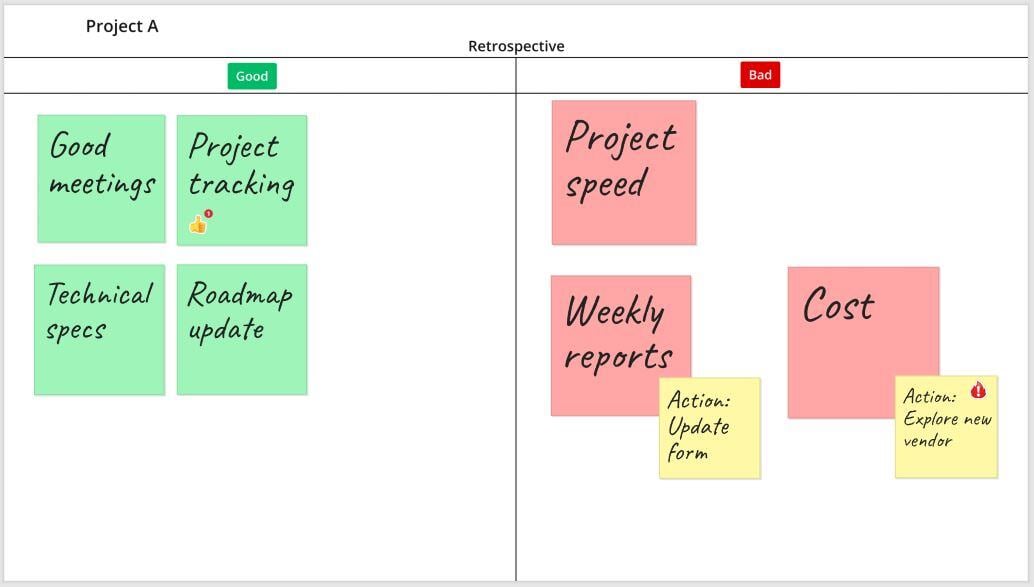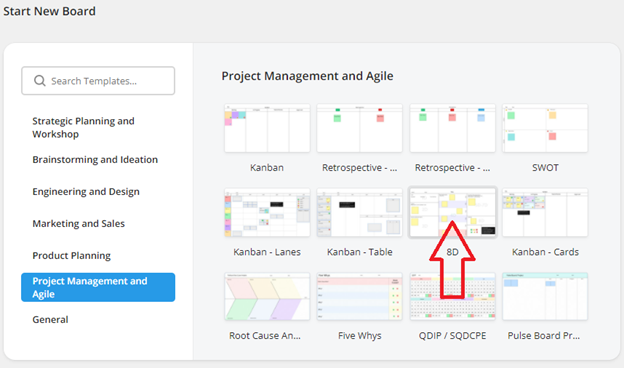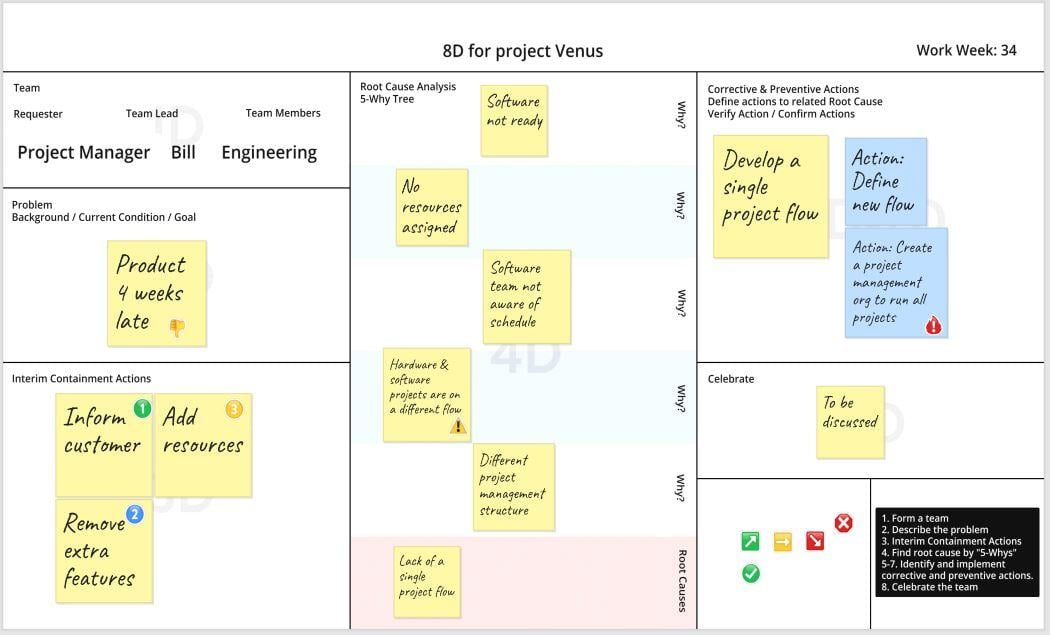Teams commonly use 8D and Retrospective techniques to effectively self-improve. By critically examining what went wrong, teams can identify, correct and fix a business process or a way of working. So, when would you use 8D instead of a Retrospective?
Generally, Retrospective is about continually improving a team’s way of working, and it is owned by the team. On the other hand, 8D is about focusing on a defect and identifying processes and ways of working, both inside and outside the company, to ensure it will not happen again.
When to use Retrospective
Teams conduct Retrospectives periodically for their own sake of self-improvement. Team members address their ways of working and clear obstacles at a consistent pace.
Retrospectives are typically conducted by the team on a dry-erase whiteboard, using sticky notes to capture team feedback. However, tools such as the digital FlatFrog Board are imperative for hybrid teams, enabling remote participants to join and engage as though they were in the same room.

For example, a firmware development team may hold a Retrospective every three weeks to examine recent issues and solve them within the team.

When to use 8D
A critical failure needing correction may trigger the 8D. Unlike a Retrospective, which is an internal team process, the 8D report can be initiated by anyone – a customer, a manager, a Project Manager or someone within the team.
The goal of the 8D process is to drill down into a problem and, for example, ask “five whys” to find the true root cause. The true root cause is typically created by misunderstandings within the company or between companies, but it can be difficult to fix without drilling deep enough.
8Ds typically use traditional Word or Excel files. However, there are advantages to using an online whiteboard such as the FlatFrog Board. The digital whiteboard comes with an 8D, Retrospective and many more templates.

For example, 8D can be used to examine and fix product delays or cost overruns.

Unlike Word and Excel, which are normally used by a single person, online collaborative whiteboards allow everyone to contribute. During the session, both local and remote users can contribute equally with real-time annotation, and they can easily add notes, images, Word, Excel and PowerPoint files to the board.
Both 8D and Retrospective are methods used by teams and organizations. While teams use Retrospective to periodically self-reflect and improve, 8D is instead triggered by an event and is deployed to repair a significant defect. Whether using Retrospective or 8D, online whiteboards give teams the capacity to work together in more visual and collaborative ways. Finally, the hybrid whiteboard is perfectly suitable for distributed teams working from the office or home.
FlatFrog
FlatFrog is a provider of free online whiteboards (app.flatfrog.com).
FlatFrog has also designed patented InGlass™ touch display technology from the ground up, providing the best pen and touch input to mimic the intuitive feeling of a dry-erase board. InGlass™ touch displays are available through our partners, including Dell, Google, Samsung, SMART, Sharp, Ricoh, Avocor, CTOUCH and more (www.flatfrog.com/partners).


